Step-by-step tutorial on how to install Magento on cPanel host
Managing articles on the website is one of the topics that are of great importance for webmasters. In fact, after choosing a domain suitable for buying a host, the next step is to create articles and work on website optimization for search engines. Magento is a powerful content management system like WordPress that many people use to manage their website content. For this reason, as a webmaster, you may want to install Magento on your host and receive Magento training. In this article on the FA host database, we decided on how to install Magento on the cPanel to teach you.
- How to install Magento on the cPanel host
- Magento or WooCommerce?
- How to install Magento on cPanel
How to install Magento on the cPanel host
the content management system is open-source due to its convenient user interface and good performance, attracting the attention of many webmasters. Using the Magento platform, you will be able to launch your online store in the shortest possible time. Currently, a large number of active internet carpet stores have used this business software to start their business.
It is enough to install and operate the Magento store to download the latest version of this program from magento.com and install it using the facilities in your management panel. To install Magento, you must go through 4 main steps:
- Upload the Magento file on the cPanel host
- Create a new database on cPanel
- Installing Magento on the CPanel host
Next, we will teach you how to install Magento step by step. But before that, let’s talk a little about the methods of setting up a store and the best CMS and see if Magento or WooCommerce plugin is better for setting up an online store.
Magento or WooCommerce?
Many users ask whether Magento or WooCommerce is better. What are the advantages and disadvantages of each? Well, we must say that both of them provide a way to have an online store. Magento is a bit more complicated but has its own features and capabilities. You must be asking if WooCommerce can be expanded! Yes, it is possible to expand WooCommerce capabilities with the help of external plugins.
In this regard, a free training course 0 to 100 for setting up an online store with WooCommerce has been produced and presented. If your choice is WooCommerce, we suggest not to miss this training course.
Training from zero to 100 for setting up an online store
WooCommerce is a plugin that can be implemented on the WordPress content management system and allows you to set up a great online store, which is completely free. But it does not mean that you will not need commercial plugins to expand the capabilities of your site. You can use Magento or WooCommerce according to your needs. Since the number of WordPress websites is very high, it is regularly updated, and there are many plugins to expand its capabilities, so we recommend this content management system, but if you have a large store and the number and variety of your products are high, it is better. Also, try Magento. Of course, consider that the Magento management system has its own prerequisites, and for better performance, we recommend that you install and run it on a virtual server. In the following, we will teach Magento, how to install it, and how to set up the Magento store.
✍ To get more information and compare different content management systems, you can have comprehensive training on the features of the best content management system. Check out
How to install Magento on cPanel
As mentioned earlier, in order to set up the Magento store, first download the installation file from the magento.com website; then in order to set up and install Magento on the cPanel host, you must go through the following steps one by one:
1. Upload the Magento file on the CPanel host
In the first step, you need to upload the Magento file on your host. For this you must:
- You must management panel of your username and password to enter the
- Then Files ” menu File Manager .
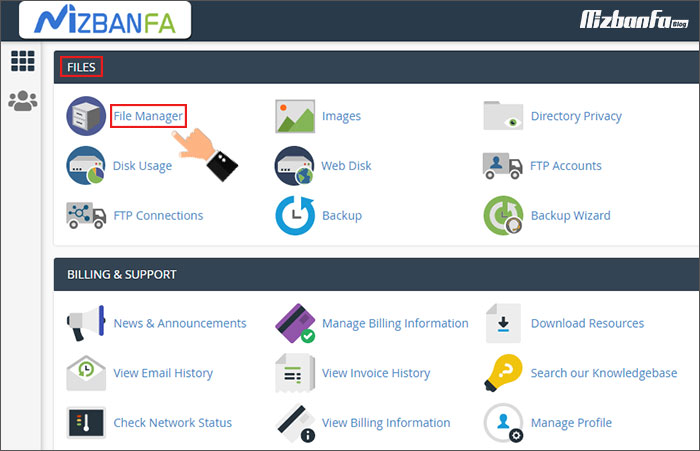
- ” folder as Public_html in the image below Upload . If there is a problem in this regard, you can get help from the video tutorial on how to upload a file in cPanel .
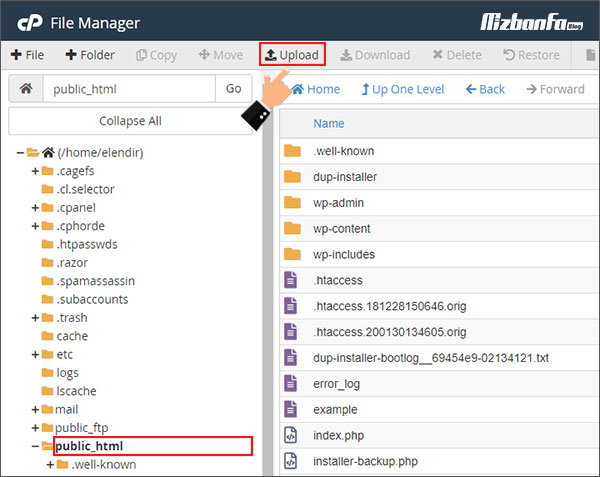
- Then you have to extract the Magento file from the compressed mode. For this, you can read the tutorial article on how to extract files from compressed mode in cPanel .
🟢🔵 Very important point: Check that the files and folders related to Magento installation are not included . In fact, all this information should be extracted directly during the installation process. Otherwise, you will face problems during Magento installation on the host.
2. Create a new database on cPanel
After uploading the Magento installation file and extracting it, it is time to create a new database and connect Magento to the database. In order to create a database in the cPanel host, you must proceed as follows:
- You must first DATABASES ” menu MySQL® Database Wizard .
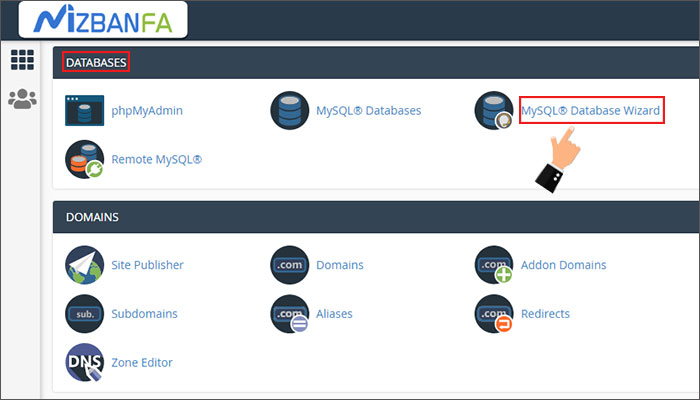
- Then how to quickly create a database in cPanel using the MySQL Database Wizard tool to create your new database
Be careful to save the information of this step, including the database name, username and password, in a text file because you will need them in the next steps.
3. Installing Magento on the cPanel host
After completing the previous steps, it is time to start installing Magento on the cPanel host. For this purpose, you should proceed as follows:
- When installing Magento, you must enter your website address in your browser. With this, a page similar to the image below will be displayed to you. This page asks you to agree to the Magento Terms and Conditions. to pass this step, Agree and Setup Magento. After this, a 6-step process is presented to you.
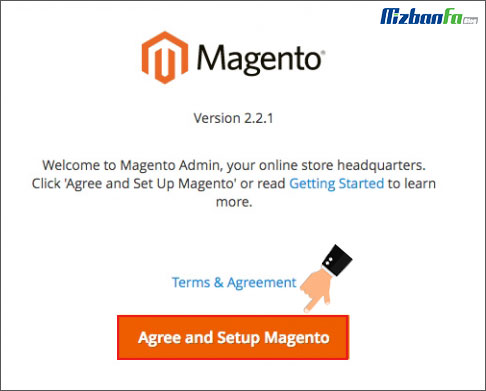
- The first step of setting up a Magento store is to check whether your website has the necessary prerequisites for installing Magento or not. For this purpose, you must click on the ” Start Readiness Check ” button to check the prerequisites for installing Magento.
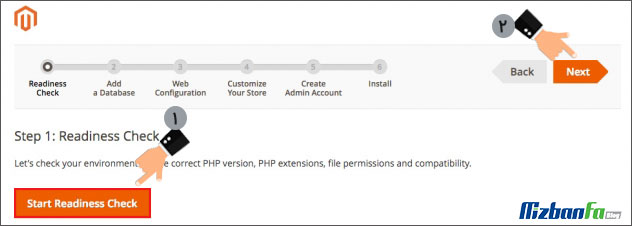
- If all the items are correct, you will see a screen like the image below and all you have to do is click the ” Next . In this way, you enter the second stage of Magento installation. Otherwise, you must identify and fix the error that occurred.










